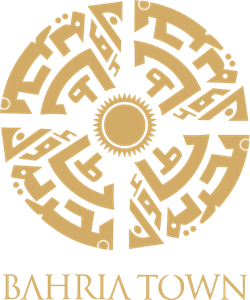
Pakistan’s economy witnessed a slight contraction in FY2023 mainly due to global
economic slowdown,
high global inflation, and flood damages. However, due to government’s timely and effective policy
measures, the economy has witnessed a moderate recovery in FY2024 despite challenges of fiscal
consolidation, monetary tightening, geopolitical tensions, and persistently high inflationary pressure.
Quarterly growth estimates has indicated a consistent positive trend in economic activities, culminating
in an overall growth of 2.38 percent for the outgoing fiscal year. Agriculture sector has recorded
highest
growth in the last 19 years which is a significant achievement towards ensuring food security and price
stability. Economic activities have benefited from improvements in the agriculture sector, paving the
way for further strengthening in the upcoming months. The positive spillover effects are observed on
industry and services sectors. Economic activities are gradually improving, inflation is trending
downward, and the external sector has stabilized. Moving forward, the economy is expected to have
favorable external and domestic economic prospects.
Pakistan remains steadfast on path to macroeconomic stabilization, gearing towards a shift to an era of
sustainable and inclusive growth. Challenges abound but the resolve is unwavering. All chronic systemic
issues inflicting various sectors of the economy that have hampered progress and prosperity in the past
are on the operating table for permanent resolution. External account vulnerability and fiscal
mismanagement, having a direct bearing on inflation, are at the core of corrective policy actions being
rolled out by the Government. As these measures take shape and mature, it is hoped that the hardships
of the common man on the street will alleviate.
Government has renewed its focus on high potential sectors like IT, SMEs, mines and minerals, tourism,
exports and agriculture. These sectors can pay rich dividends and lend support to the country’s balance
of payments position. Complementing this, are efforts to reinvigorate foreign investments in the country
and extend all out facilitation to overseas Pakistanis for realizing the full potential of home
remittances.
Going forward, fiscal discipline through curtailment of nonessential expenditures coupled with all-
encompassing reforms at the Federal Board of Revenue will ensure financial self-sustainability. Support
from bilateral and multilateral development partners remains important. The Stand-by Arrangement
with the IMF, signed by the Government at the outset of FY2024 was concluded successfully as Pakistan
now looks forward to an extended stabilization and home-grown growth program.
During FY2024, Pakistan’s economy registered moderate recovery reflected by a GDP growth of 2.38
percent against previous year’s contraction of 0.21 percent. Agriculture emerged as a main driver of
economic growth, registering a growth of 6.25 percent on the back of double- digit growth in output of
major crops. Industrial and services sectors also showed resilience with each posting a growth of 1.21
percent. Current account deficit was kept under check, with marked improvement in foreign exchange
reserves, reaching US$ 14.6 billion by end May 2024. The fiscal sector progressed towards stability,
propelled by consolidation efforts and targeted reforms. Fiscal deficit remained manageable with an
overall primary surplus. Rupee appreciated by almost 3.0 percent during the first eleven months.
Economic Overview of Pakistan
| KEY INDICATORS FY2024 | |
|---|---|
| GDP Growth | 2.38% |
| Agriculture | 6.25% |
| Industries | 1.21% |
| Services | 1.21% |
| Per Capita Income | (US $) 1,680 |
| Investment | 13.1% |
| Savings | 13.0% |
| KEY INDICATORS-Growth | |
|---|---|
| Agriculture | 6.25% |
| Crops | 11.03% |
| Livestock | 3.89% |
| Forestry | 3.05% |
| Fishing | 0.81% |
| KEY INDICATORS-Money and Credit Jul-Mar FY2024 | |
|---|---|
| Wearing Apparel | 5.4% |
| Furniture | 23.1% |
| Leather Product | 5.3% |
| Fertilizer | 16.4% |
| Pharmaceutical | 23.2% |
| LSM Growth Rate | -0.1% |
| Textile Growth | -8.3% |
| Mining & Quarrying | 4.9% |
| KEY INDICATORS-Fiscal Development | |
|---|---|
| Total Revenue | (Rs. Trillion) 9.78 |
| Total Expenditure | (Rs. Trillion) 13.68 |
| Tax Revenues | 29.3% Rs 7.26 tr |
| Non-Tax Revenues | 90.7% Rs 2.52 tr |
| Current Expenditure | 33.4% Rs 12.33 tr |
| Development Expenditure | 14.2% Rs 1.16 tr |
| Fiscal Deficit (as % of GDP) | 3.7% (same as last year) |
| Primary Surplus (as % of GDP) | 1.5% |
| KEY INDICATORS- Inflation | |
|---|---|
| Consumer Price Index (CPI) | 24.5% (FY2024)* 29.2% (FY2023)* |
| CPI Urban | 25.1% (FY2024)* 26.8% (FY2023)* |
| Food | 24.2% (FY2024)* 37.3% (FY2023)* |
| Non-Food | 25.7% (FY2024)* 20.3% (FY2023)* |
| Sensitive Price Indicator (SPI) | 28.7% (FY2024)* 32.8% (FY2023)* |
| Wholesale Price Index (WPI) | 21.1% (FY2024)* 33.9% (FY2023)* |
| FAO Food Price Index | -13.8% (2023/22) -7.5% (Apr-24/Apr-23) |
| KEY INDICATORS- Trade and Payments (Jul-Apr FY2024) | |
|---|---|
| Current Account Deficit | 0.2 |
| Exports | 25.7 |
| Imports | 43.4 |
| Trade Deficit | 17.7 |
| Remittances | 23.8 |
| Foreign Direct Investment | 1.5 |
| Miscellaneous | |
|---|---|
| Expenditure (FY2023) | 1.5 (as % of GDP) |
| Literacy Rate | 62.8% |
| Universities | 263 |
| Higher Education Allocation | 69.7 (Rs. billion) |
| Public Health Expenditure | 1.0 (As % of GDP FY2023) |
| Hospitals | 1,284 (2023) |
| Registered Doctors | 299,113 (2022) |
| Unemployment Rate | 6.3% (LFS 2021) |
| Pakistan Post’s Network | 10,408 (number) |
| Total Electricity | 68,559 (GWh) |
| Petroleum Products | 12.30 (million tonnes) |
| Gas | 3,207 (Mmcfd) |
| Coal | 17.3 (million tonnes) |
| IT and ITeS Companies | 20,000** (Regd. with PSEB) |
| Freelancers’ Remittances | 350.2* (US$ million) |
| Total Telecom Subscribers | 194.6** (million) |

























